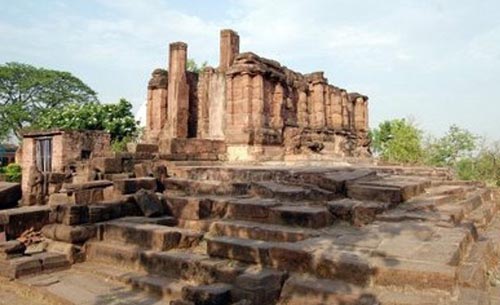Malhar Fort

Information on Malhar Fort (Bilaspur, Chhattisgarh) - History & Architecture
If we have to discuss about the most significant archaeological site of Chhattisgarh, then the Fort of Malhar is the most prominent one for this discussion. It is actually situated in the centre of the historical town of Malhar in the district of Bilaspur. The location selected for the establishment of the Malhar Fort is an extraordinary one. The western part of the site is surrounded by the river Arpa, while the southern and the eastern part are guarded by the Shivanath and Lilagar rivers respectively. The name of the place Malhar or Mallal was originated from the word "Mallari". This was the title given to Lord Shiva for defeating the demon of the Puranas, named Malla.
Malhar Fort Architecture
The architectural aspect of the Malhar Fort was significantly established from dynasty to dynasty. During the era of 200 CE a seal made of clay resembling the village of Kosala or "gamasa Kosaliya" was brought up. It was actually the name of the place that surrounds the place of Malhar. Also the legendary clay figure of 'Maharaja Mahendrasya' was located at the entrance of the Fort. It was inscribed in the alphabets of Gupta Brahmi. An attractive parapet consisting of two trenches are some of the astonishing features of the Malhar Fort.
The ancient castle built inside was signified by the Malhar Fort. The surroundings of the Fort especially the north-western portion are the places of habitation for the people of this town. At present numerous sculptures of Hindu, Jain and Buddhist religion and mud forts are originated in several districts of Chhattisgarh. Some tanks and wells made of mud are still present in the ruins of Malhar. They were used for preserving water needed for agricultural activities and other vital works for the people residing there. The architectural style of these sculptures, forts and structures are visible in the prehistoric period of India.
Some important dynasties which greatly helped to develop the architectural structure of the Malhar Fort are the Mauryas, the Sungas, the Somvansis, the Sarabhapurias, the Kalachuries and many more.
Malhar Fort History
The exact date of establishment of this great historical Fort is not known. But it was assumed that this attractive monument was established around 2000 BCE by the Protohistoric people residing on this place. Due to the historic route of this Malhar town, places like Puri and Koshambi are connected and it goes through the ports situated on the Bay of Bengal. The golden time of Malhar and its adjoining areas was the phase between 325 and 655 AD. The arts and crafts prepared during this phase by the local citizens of Malhar had reached a new height. The place of Malhar was then mentioned as the prime centre of architecture and handicrafts. Also, several new holy places of Hindus and monasteries were built around at time. During 11th century the famous ruler of Kaluchuri dynasty, Jajalladeva found the Didneshwari Temple present in Malhar. Another temple just 2 kilometres away from the Didneshwari Temple named the Kedareswar Temple was established by Somraj in the middle of the 9th century. Somraj was the trusted governor general of king Jajalladeva.
Malhar Fort Tourism Importance
One of the most ancient and architectural sites in the history, Malhar Fort served greatly to the tourism industry of India. Though its present condition may be in ruins still the Fort of Malhar is a heritage structure where uncountable number of visitors visits every year to witness the ancient architecture of historical India.
- Andaman Nicobar Monuments
- Andhra Pradesh Monuments
- Assam Monuments
- Bihar Monuments
- Chhattisgarh Monuments
- New Delhi Monuments
- Goa Monuments
- Gujarat Monuments
- Haryana Monuments
- Himachal Pradesh Monuments
- Jammu and Kashmir Monuments
- Karnataka Monuments
- Kerala Monuments
- Madhya Pradesh Monuments
- Maharashtra Monuments
- Odisha Monuments
- Punjab Monuments
- Rajasthan Monuments
- Tamil Nadu Monuments
- Telangana Monuments
- Uttar Pradesh Monuments
- West Bengal Monuments